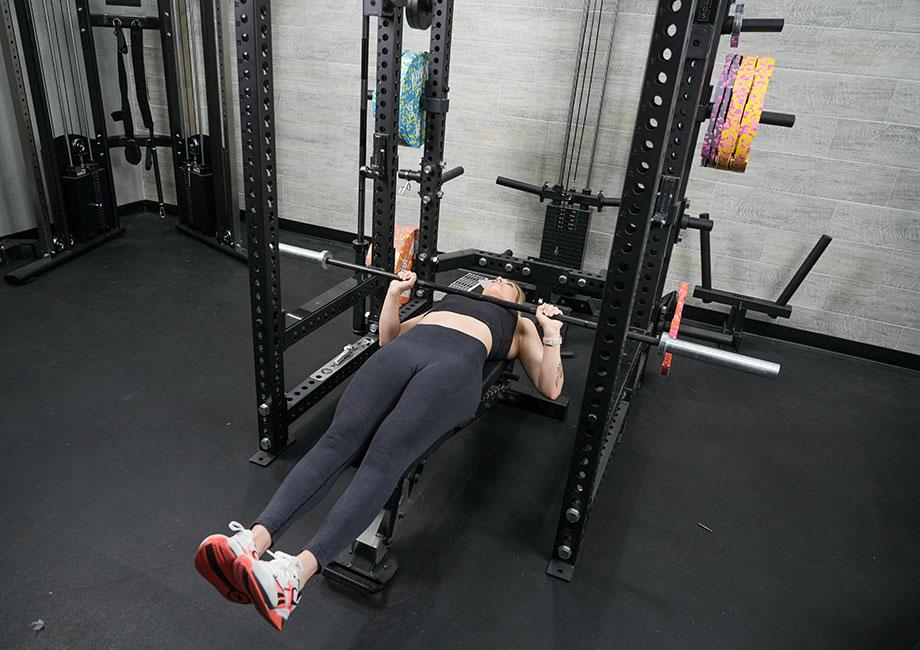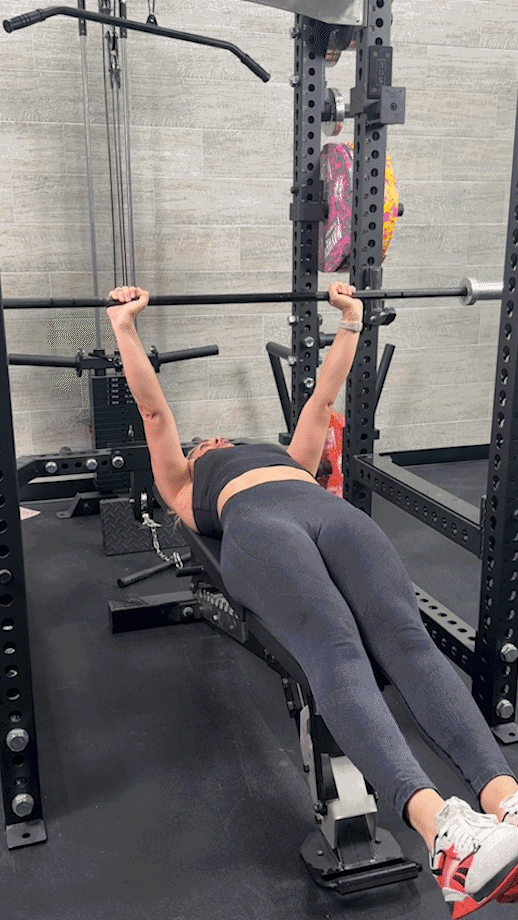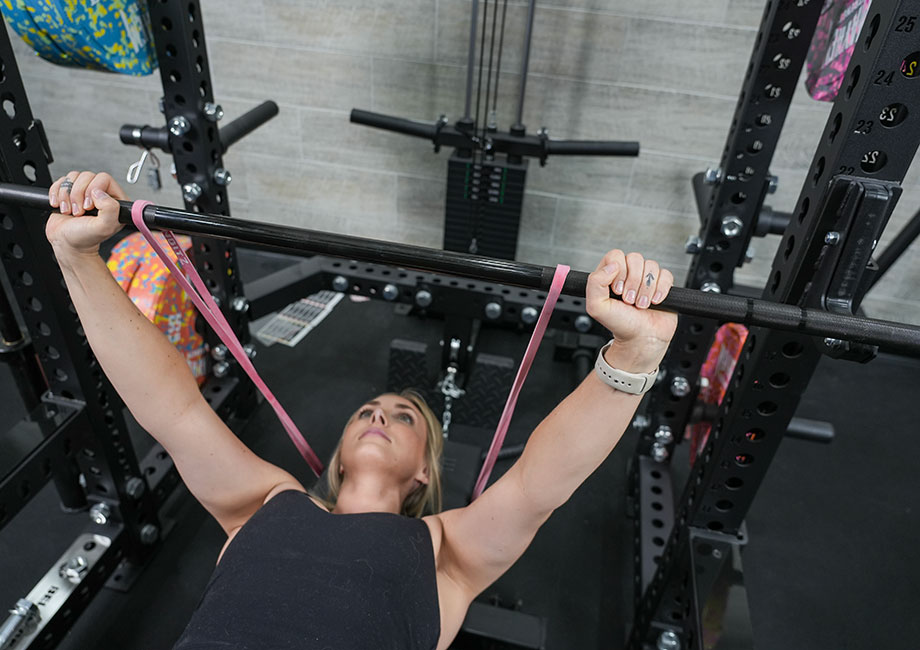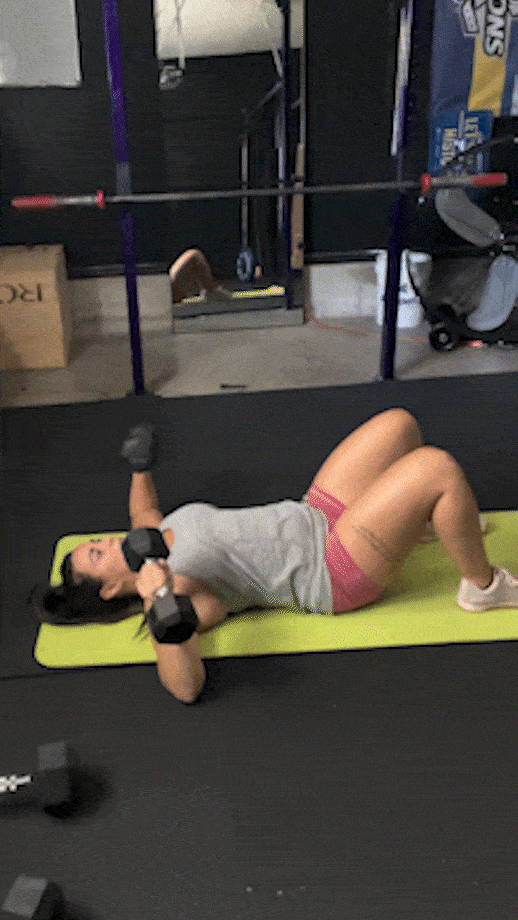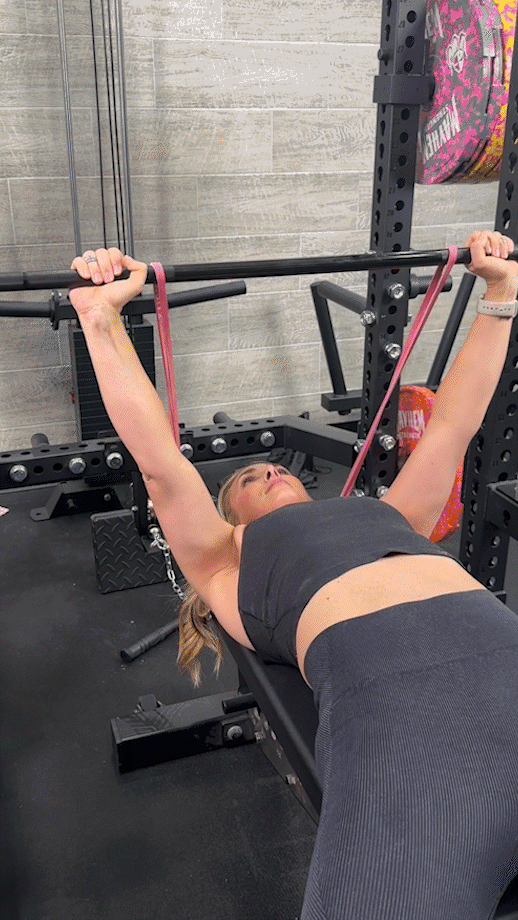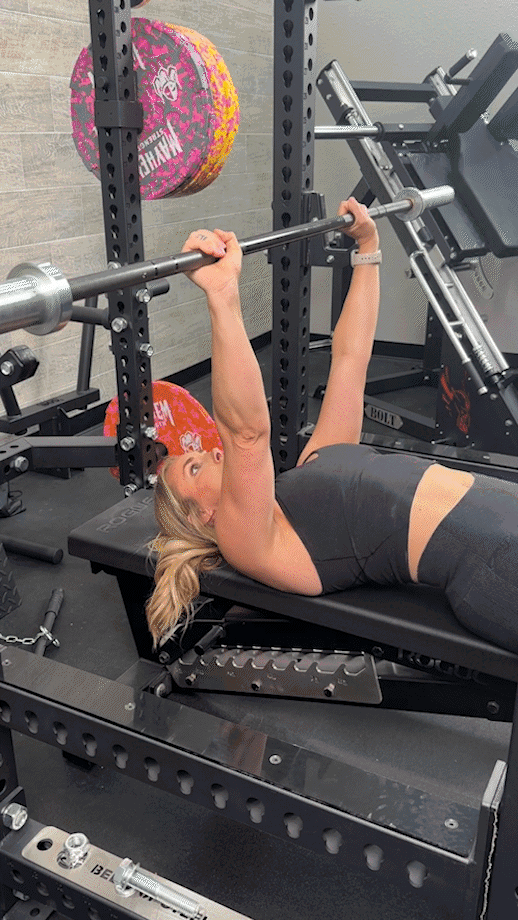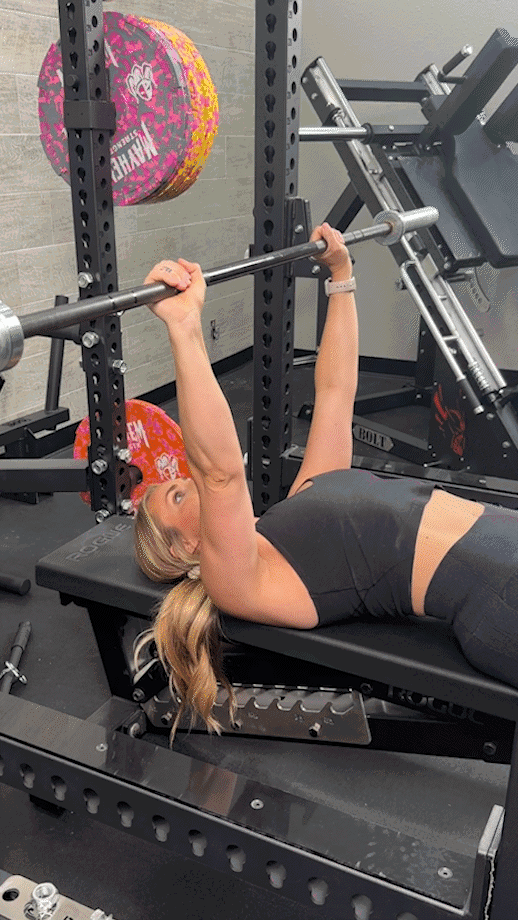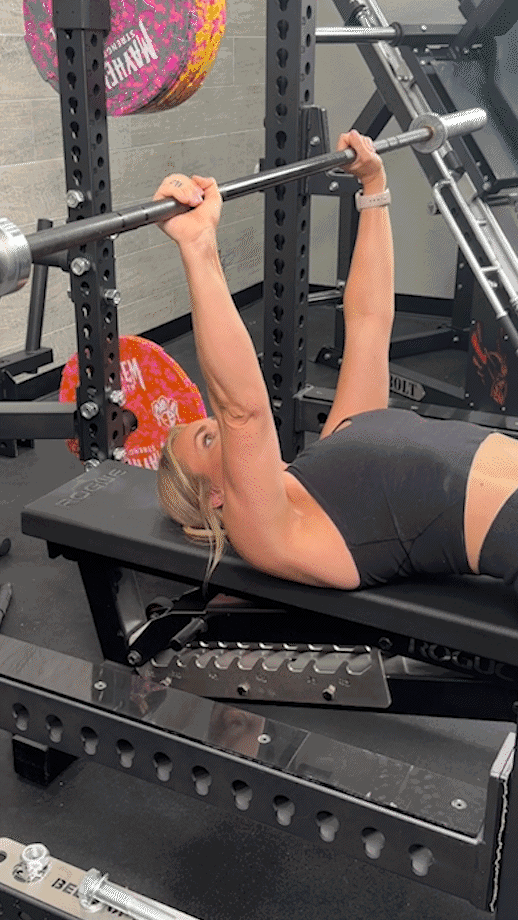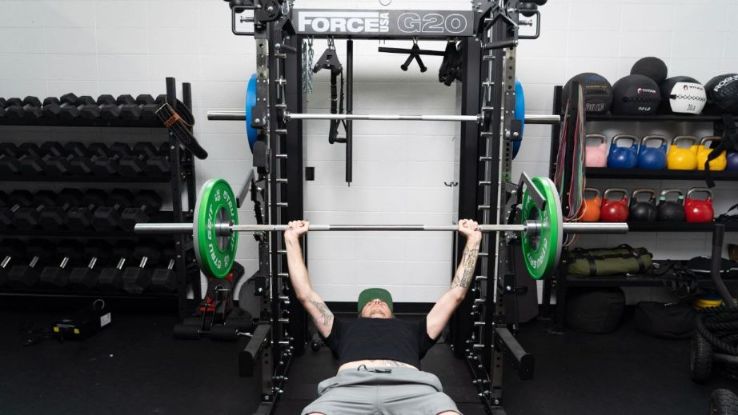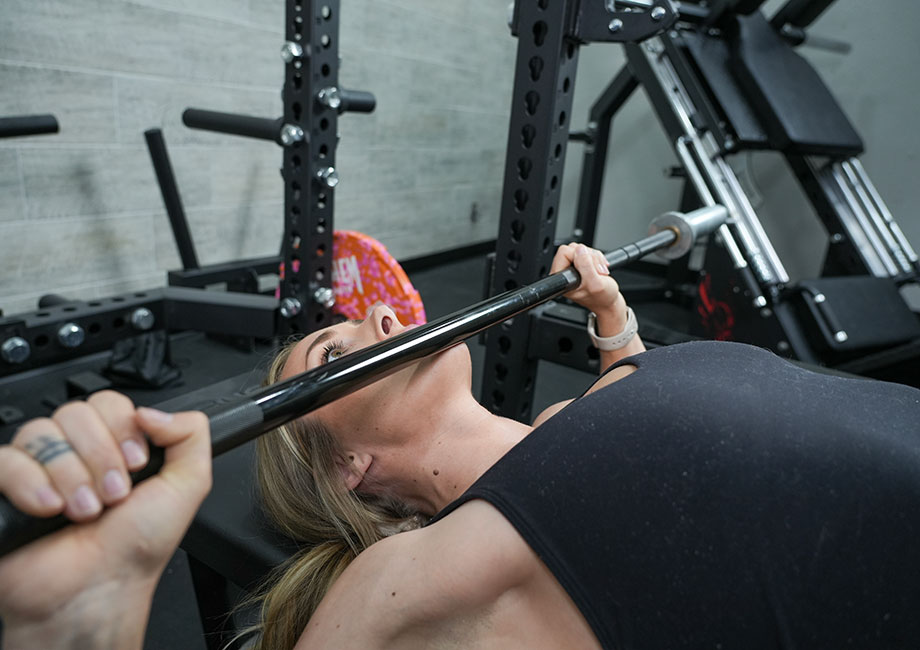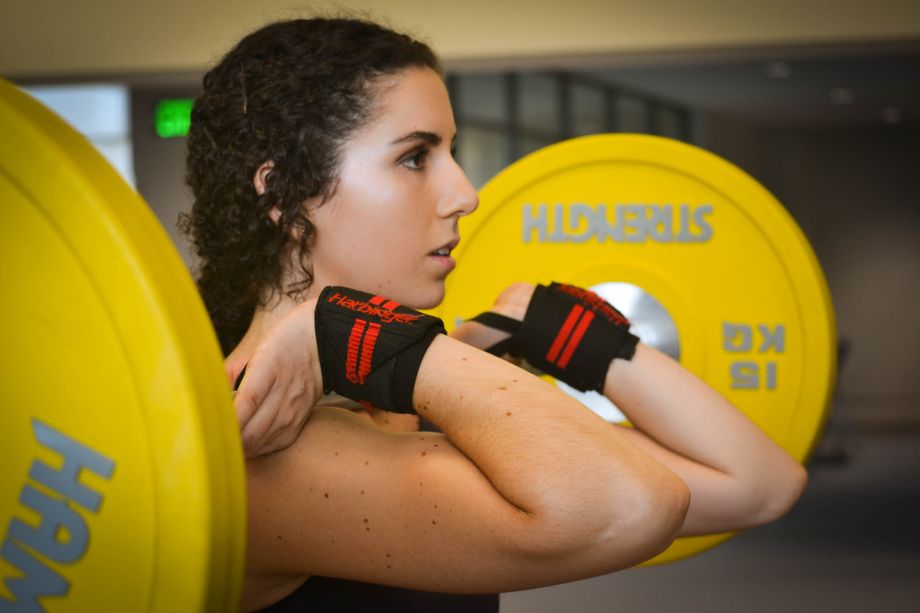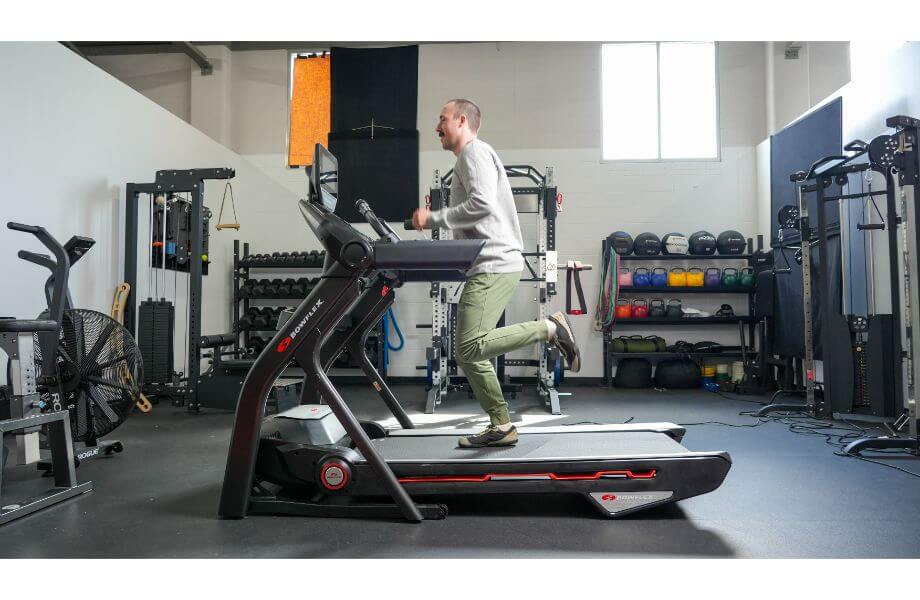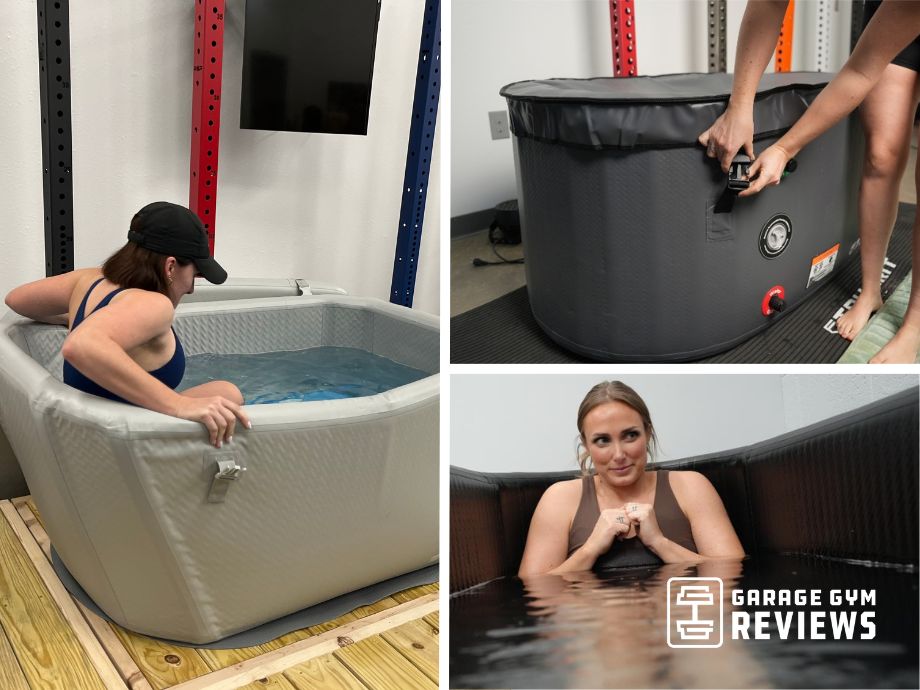|
If you’re hearing about this exercise for the first time, here’s a little background (er…chestground). The Larsen press gets its name from Adrian Larsen, a world-class powerlifter—and former world record holder for the bench press—who famously bench pressed a motorcycle, passenger included, for charity in 2016. Larsen knows how to excel at the bench press, and one of his secret weapons is the exercise that now bears his name: the Larsen press. The Larsen press involves lifting your legs off the floor while benching to eliminate the leg drive from the lift and maximize upper-body muscle activation. Caine Wilkes, OLY, USAW-1, and GGR senior staff writer, has the scoop on perfecting your Larsen press form, plus benefits, variations, alternatives, and more. Check it out in our tutorial below! How To Do the Larsen Press
You’ll have a leg up (no pun intended) if you’re already familiar with the barbell bench press, as the Larsen press doesn’t require too many adjustments to your pressing form. For safety purposes, lift your legs after unracking the bar. How to do it: Set up your bench press station, rack your barbell, and load it with desired weight plates. Lie on a flat bench with the bar positioned over your face. Grip the bar with a double overhand grip that’s slightly outside of shoulder-width. Breathe in, then exhale and brace your core as you unrack the bar. Position the barbell directly above your chest. Once in position, lift your legs off the floor. You may leave them floating in midair or rest them on a sturdy object like a plyo box. Slowly bring the bar to your chest by bending your elbows. Lightly touch your chest at the bottom, then press the bar back up. Squeeze your pecs at the top, then cycle into the next rep. Repeat for reps then rerack your bar between sets.
Performing the Larsen press as a variation of the dumbbell floor press should work nicely in most home gyms, but feel free to use a household object if you don’t own a pair of the best dumbbells. Larsen Press VariationsHere are a few variations of the Larsen press that use the same movement pattern but swap out the equipment.
The Larsen press is an excellent tool for building bench press strength and upper-body muscle, but it’s not the only move that can enhance your existing push-day repertoire. Consider adding some of these Larsen press alternatives for even more gains. RELATED: Push Day Exercises Floor Press
Why do it: “The floor press is good for beginners because it reduces the range of motion and prevents your elbows from dropping too low, but it has applications beyond that,” says Caine Wilkes, OLY, USAW-1. “It’s also good for improving lockout strength, which leads to better bench press technique on other bench press variations.” How to do it: Lie supine on the floor with your knees bent and feet planted. Grip a dumbbell in each hand using an overhand grip. Press the dumbbells over your chest until your elbows reach full lockout. Slowly lower the dumbbells until your triceps and elbows touch the floor. Repeat for reps. RELATED: What Muscles Does the Bench Press Work?
Why do it: Adding a resistance band to your bench press provides tension when the barbell is at lockout, which in turn helps the lifter build strength in the last part of the eccentric phase, where most lifters struggle. It also may increase triceps activation for some extra oomph. How to do it: Secure a resistance band around your barbell so that it wraps around the barbell shaft and beneath your bench. Then, set up your station and load your barbell per usual. Lie on the weight bench, grip the bar, and unrack it over your chest. Slowly bring the bar toward your chest by bending your elbows. Lightly touch your chest at the bottom, then press the bar back up. Repeat for reps.
Why do it: “Many lifters rely on momentum when their bench press gets too heavy,” says Caine. “They bounce the bar off their chest, which reduces the time under tension and, in turn, muscle activation. Imposing a pause between the concentric and eccentric phase prevents this.” How to do it: Set up your bench press station, load your barbell, and lie down on the bench. Grip the bar, inhale, then exale and brace your core as you unrack the bar. Slowly bring the bar to your chest by bending your elbows. Pause for a quick two count, then press the bar back up. Repeat for reps.
Why do it: The Spoto press—named after another former world record holder—takes the pause bench press one step further by requiring the lifter to pause with the bar held an inch or two above their chest before exploding out of the bottom of the movement. The result? Increased time under tension and more power development. How to do it: Set up your bench press station, load your barbell, and lie down on the bench. Grip the bar, inhale, then exhale and brace your core as you unrack the bar. Slowly bring the bar down until it’s approximately two inches above your chest. Explode from the bottom, pressing the bar back to the starting position. Repeat for reps.
Why do it: The forebodingly named guillotine press involves bringing the barbell to your clavicle rather than your chest, emphasizing your upper pecs. Just be sure you have a good spotter because dropping a barbell on your neck is no bueno. How to do it: Set up your bench press station, load your barbell, and lie down on the bench. Grip the bar, inhale, then exhale and brace your core as you unrack the bar. Slowly lower the bar, letting your elbows flare more than you would for the standard bench press, until it’s nearly touching your clavicle. Pause, then press the bar back to the top. Repeat for reps.
The Larsen press is one of the best chest exercises for your powerlifting, bodybuilding, or strength training program. It’s a move that helped make Adrian Larsen one of the best bench press specialists in the world and may benefit you, too. Greater Isolation of the Upper BodyThe bench press was already predominantly an upper-body exercise, but lifting your feet off the floor while pressing increases activation in these muscle groups for even greater upper-body strength and hypertrophy. RELATED: Upper-Body Workout At Home “When you bench with your feet planted, you can use the leg drive to force the barbell back up to the top position,” says Caine Wilkes, OLY, USAW-1. “With your feet in the air, it’s all up to your upper body muscles to produce that force and move the weight.” Greater Core ActivationAnyone who’s performed leg lifts or hollow holds knows that holding their legs in an elevated position provides some major core activation. Performing the Larsen press, basically just a “feet-up bench press,” involves a nearly identical position, meaning your abdominals will scream after a few sets.
“You can reduce the level of core activation by using a plyo box or something else sturdy to rest your legs while you lift,” says Caine, “but raising them off the floor and hovering them in midair may greatly increase your core activation, building core strength and stability in the process.” RELATED: Dumbbell Core Workout May Help Improve Bench Press FormFor “Larsen press success,” you’ll need to dial in your form because you can’t count on your lower-body muscles to pick up the slack. “The Larsen press is a great bench press variation to build strength and muscle, but it’s also a tool for improving your body awareness and alerting you to issues with your bench press form,” says Caine. “You’ll find that, with your feet off the floor, you really need to correct any problems, however slight, to optimize your movement mechanics and get enough power to succeed.” Improvements in your bench press technique aren’t just for the Larsen press. You’ll see it translate nicely on your regular barbell bench press, dumbbell bench press, close-grip bench press, and any bench press variation. Common Larsen Press MistakesThe Larsen press makes the perfect weightlifting “secret weapon,” but it’s meaningless if you’re not performing the movement correctly. Look out for the following common mistakes. Lifting With Poor FormLifting your legs off the floor increases your body awareness and alerts you to the specific areas where your form may be less than ideal. You’ll want to correct these problems to fully maximize your power output and minimize your risk of injury. Here are a few characteristics of proper Larsen press form: The bar is positioned directly over your chest Your bar path is perfectly straight Your upper back is pressed into the bench Your lower back is slightly arched Your core is braced Your wrists are vertically stacked over your elbows Your elbows are tucked into your torso If your form is not picture-perfect in all of these ways, it may not be catastrophic, but it may hurt your efficiency and diminish the force you can produce. So, for the best results, keep your form tight. RELATED: Best Weight Benches Not Using a Full Range of MotionJust like the regular bench press or any weightlifting exercise, you’ll receive less muscle activation and, in turn, less gains if you’re not performing a full range of motion.
For the Larsen press, that means starting with your arms in the full lockout position, bringing the bar to lightly touch your chest, and pressing it back to full lockout; don’t forget to squeeze those pecs in the peak position, too! Using Momentum“Strength gains are all about progressive overload and lifting heavy, but you need to lift with proper form and properly engage the target muscle groups to reap those rewards,” says Caine. “A lot of lifters bite off more than they could chew on lifts like the bench press or Larsen press and resort to bouncing the bar off their chest. It’s poor form and could cause an injury, too.” Instead of trying to bounce the super heavy barbell off your sternum, use lighter weights that you can move with proper form for more reps. It’s better to go light and perform perfect reps than to eke out poor-quality reps with heavier weights. Muscles Worked by the Larsen PressWhen performed correctly, the Larsen press is a feast of muscle activation for the upper body. The primary movers of this unique bench press variation include: Larsen Press: Final ThoughtsIt’s not on everyone’s to-do list to bench press a freakin’ motorcycle. Nonetheless, the Larsen press is an excellent tool for building upper body strength and muscle, improving your bench press technique, and making some serious gains. And all you have to do to unlock this undeniable upside is to get those feet off the floor and bench press as usual. So, what do you have to lose? Work the Larsen press into your next chest and triceps split, and see how it works! Larsen Press: FAQs
What is the point of the Larsen press?
The standard barbell bench press is excellent at building upper-body strength and muscle, but lifters can intentionally (or inadvertently) drive their feet into the floor to get extra leverage during the lift. The Larsen press addresses this by lifting the legs into the air, thus isolating your upper-body muscles and increasing core activation. Is the Larsen press better than the bench press?
“I wouldn’t say the Larsen press is necessarily better, but it’s a useful tool that translates to better bench press technique,” says Caine Wilkes, OLY, USAW-1, and GGR senior staff writer. “I’d say, in terms of overall loading potential and strength gain goals, the regular bench press is best, but, in terms of upper-body muscle activation, the Larsen press may be preferred.” RELATED: How To Build Muscle Can you do a Larsen press with dumbbells?
Absolutely. You can perform the Larsen press with a barbell, dumbbells, other free weights, or a motorcycle if you happen to be Adrian Larsen himself—the only limit is your imagination. The only Larsen press non-negotiable is that you keep those feet off the floor. Further Reading
The Ultimate Holiday Gift Guide For Women (2025): The Best Fitness Gifts For Her We curated the best fitness gifts for her, from budget options and apparel to cardio equipment and supplements. Read More
Hylete Reviews (2025): Quality Comes at a Price Hyletecame on the scene a few years ago offering well fitting shorts and shirts with sweat-wicking material that were CRAZY comfortable. The quest is, is the price worth it? Read More
Is Running On a Treadmill Bad for You? Our Experts Weigh In If you’re wondering, “Is running on a treadmill bad for you?” we have your answer. Read More
Portable and Packable: We Tested the Best Inflatable Cold Plunge Tubs of 2025 Our experts tested the best inflatable cold plunge tubs so you can pack them and carry them for on-the-go recovery. (责任编辑:) |

